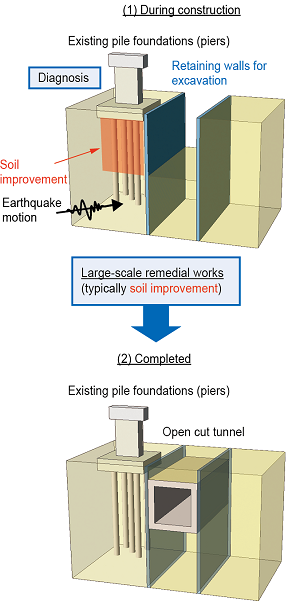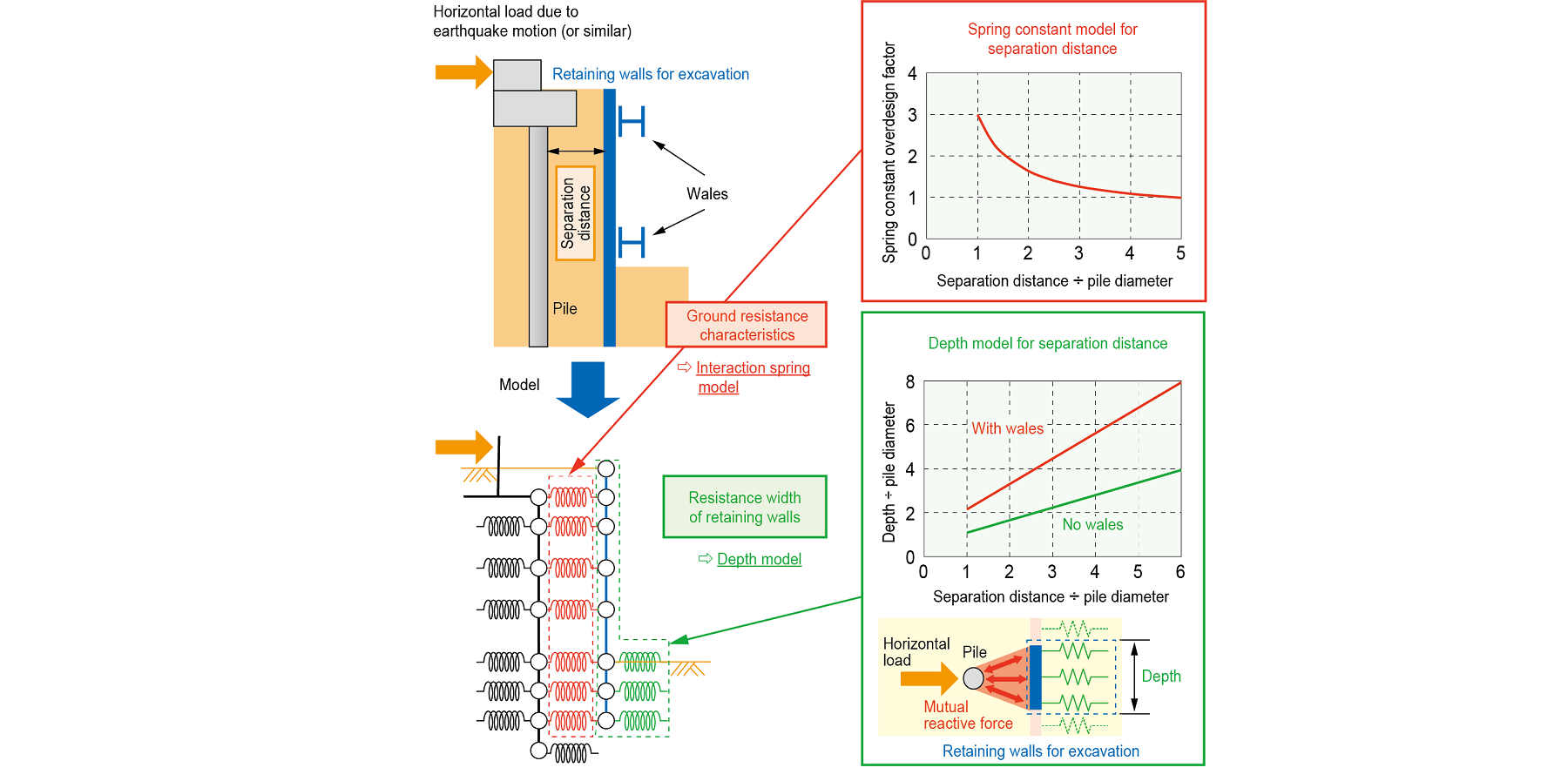2. Seismic diagnostic for existing pile foundations affected by nearby excavation work
There are many railway projects currently underway in urban areas including building new lines, undergrounding existing lines, and removing level crossings by relocating the road under the railway line. Most of these projects involve construction of new underground structures in close proximity to existing railway structures, where retaining walls are put in place prior to deep excavation. As such, there is a need for a diagnostic tool for existing pile foundations that takes into account the impact of nearby excavation works (Figure 1). In particular, although it is known that excavation work impacts the horizontal resistance of existing pile foundations, to date we have not had a good understanding of the underlying mechanism, nor have we had a suitable diagnostic tool.
We used a combination of numerical analysis and large-scale model testing to investigate the mechanism through which excavation can affect the horizontal resistance of existing pile foundations in the vicinity. We also developed a structural analysis model for use in seismic diagnosis (Figure 2).
This allows us to perform seismic diagnosis of existing pile foundations that takes into account the distance between the piles and the excavation retaining walls as well as the resistance width of the retaining walls.
As a result, we can now determine the dimensions of retaining walls needed in order to provide the necessary seismic performance when excavating near to existing pile foundations.
This approach is estimated to reduce overall construction costs by around 20%, since there is no need for large-scale works such as soil improvement.
Other Contents
- 1. Rapid seismic damage estimation tool for large bridges
- 2. Seismic diagnostic for existing pile foundations affected by nearby excavation work
- 3. Earthquake countermeasure for poles on viaduct using stays and overhead wires
- 4. Rainfall-damaged embankment safety assessment tool
- 5. Creation of time-varying dynamic wind maps
- 6. Braking performance improvement under snow conditions by controlling wheel temperature using snowproof brake systems
- 7. Platform safety support device using side-mounted cameras
- 8. Silicon buffers on passenger cars provide longitudinal ride comfort and improved safety in train breakdown operations
- 1. Rapid seismic damage estimation tool for large bridges
- 2. Seismic diagnostic for existing pile foundations affected by nearby excavation work
- 3. Earthquake countermeasure for poles on viaduct using stays and overhead wires
- 4. Rainfall-damaged embankment safety assessment tool
- 5. Creation of time-varying dynamic wind maps
- 6. Braking performance improvement under snow conditions by controlling wheel temperature using snowproof brake systems
- 7. Platform safety support device using side-mounted cameras
- 8. Silicon buffers on passenger cars provide longitudinal ride comfort and improved safety in train breakdown operations


